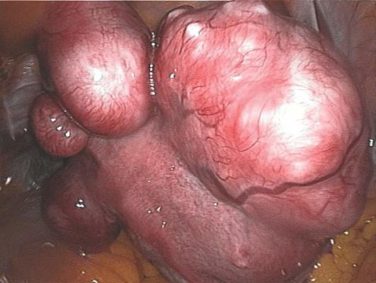AT DDW 2017
CHICAGO (FRONTLINE MEDICAL NEWS) – The best remedy for a failed fecal microbiota transplant for recurrent Clostridium difficile infection is most likely a second – or even a third or fourth attempt, according to Monika Fischer, MD.
Fecal microbiota transplants (FMTs) cure the large majority of those with recurrent C. difficile. But for those who don’t respond or who have an early recurrence, repeating the procedure will almost always effect cure, she said at the annual Digestive Disease Week.
“My recommendation would be to repeat FMT once you make sure the diagnosis actually is recurrent C. difficile,” said Dr. Fischer of Indiana University, Indianapolis. “There are sufficient data showing that the success rate after two FMTs significantly increases independent of the delivery route. But the effectiveness rate is highest when FMT is delivered via colonoscopy, so I recommend the second FMT be delivered that way.”
Recurrent failures can also be a sign that something else is amiss clinically, she said. So before proceeding with multiple procedures, some detective work may be in order. It’s best to start with confirmatory testing for the organism, she said.
“We have seen that about 25% of patients referred for FMT don’t actually have C. difficile at all,” Dr. Fischer said. “Be thinking about an alternative diagnosis when the stool tests negative, but the patient is still symptomatic, or if, before the FMT, there was less than a 50% improvement with vancomycin or fidaxomicin therapy.”
“When evaluating a patient for FMT failure, it should be confirmed by stool testing, preferably by toxin testing. Recent studies suggest that PCR [polymerase chain reaction]–positive but toxin-negative patients may be colonized with C. difficile but that an alternative pathology is driving the symptoms. Toxin-negative patients’ outcome is similar with or without treatment, and it is very rare that toxin-negative patients develop CDI [C. difficile infection]–related complications.”
For these patients, the problem could be any of the conditions that cause chronic diarrhea: inflammatory bowel disease, irritable bowel syndrome, celiac disease, microscopic colitis, bile salt malabsorption, chronic pancreatitis, or some other kind of infection. If C. difficile is the confirmed etiology, repeated FMTs are the way to go, Dr. Fischer said.
However, it may be worth mixing up the delivery method. The ever-expanding data on FMT continue to show that colonoscopy delivery has the lowest failure rate – about 10%. Enema is the least successful, with a 40% failure rate. In between those are nasoduodenal tube delivery, which is associated with a 20% failure rate, and oral capsules, with a failure rate varying from 12% to 30%. Fresh stool is also more effective than frozen, which, in turn, is more effective than the lyophilized preparation, Dr. Fischer said.
“Options are to repeat FMT via colonoscopy, but for patients who have had several failures, consider using the upper and lower route at the same time, and give fresh stool, especially if the first transplants used frozen.”
Although the efficacy of FMT doesn’t appear to depend on donor characteristics, patient characteristics do seem to play a role. Dr. Fischer and her colleagues have created an assessment tool to predict who may be at risk for failure. The model was developed in a 300-patient FMT cohort at two centers and validated in a third academic center FMT population. Of 24 clinical variables, three were incorporated into the failure risk model: severe disease (odds ratio, 6), inpatient status (OR, 3.8), and the number of prior C. difficile–related hospitalizations (OR, 1.4 for each one). For severe disease, patients got 5 points on the scale; for inpatient status, 4 points; and for each prior hospitalization, 1 point.
“Patients in the low-risk category [0] had up to 5% chance of failing. Patients with intermediate risk [1-2] had a 15% chance of failing, and patients in the high-risk category [3 or more points] had higher than 35% chance of not responding to single FMT,” Dr. Fischer said.
She also examined this tool in an extended cohort of nearly 500 patients at four additional sites; about 5% had failed more than two FMTs. “We identified two additional risk factors for failing multiple transplants,” Dr. Fischer said. “These were immunocompromised state, which increased the risk by 4 times, and male gender, which increased the risk by 2.5 times.”
She offered some options for the rare patient who has failed repeat FMTs and doesn’t want to try again. “There are some alternative or adjunctive therapies to repeat FMTs that may be considered, in lieu of repeating FMT for the third or fourth time or even following the first FMT failure, if dictated by patient preference. We sometimes offer these for elderly or frail patients or those with a limited life expectancy. These therapy options are from small, nonrandomized trials in multiply recurrent C. difficile infections but have not been vetted in the FMT nonresponder population.”
These include a vancomycin taper, or a vancomycin taper followed by fidaxomicin. Another option, albeit with limited applicability, is suppressive low-dose vancomycin 125 mg given every day, every other day, or every third day, indefinitely. “This can be especially good for elderly, frail patients with limited life expectancy, needing ongoing antibiotic therapy for urinary tract infections,” she said.
Finally, an 8-week vancomycin taper with daily kefir ingestion has been helpful for some patients. Although probiotics have never been proven helpful in C. difficile infections or FMT success, kefir is a different sort of supplement, she said.
“Kefir is different from yogurt. It contains bacteriocins like nisin, a protein with antibacterial properties produced by Lactococcus lactis.”
On Twitter @alz_gal





